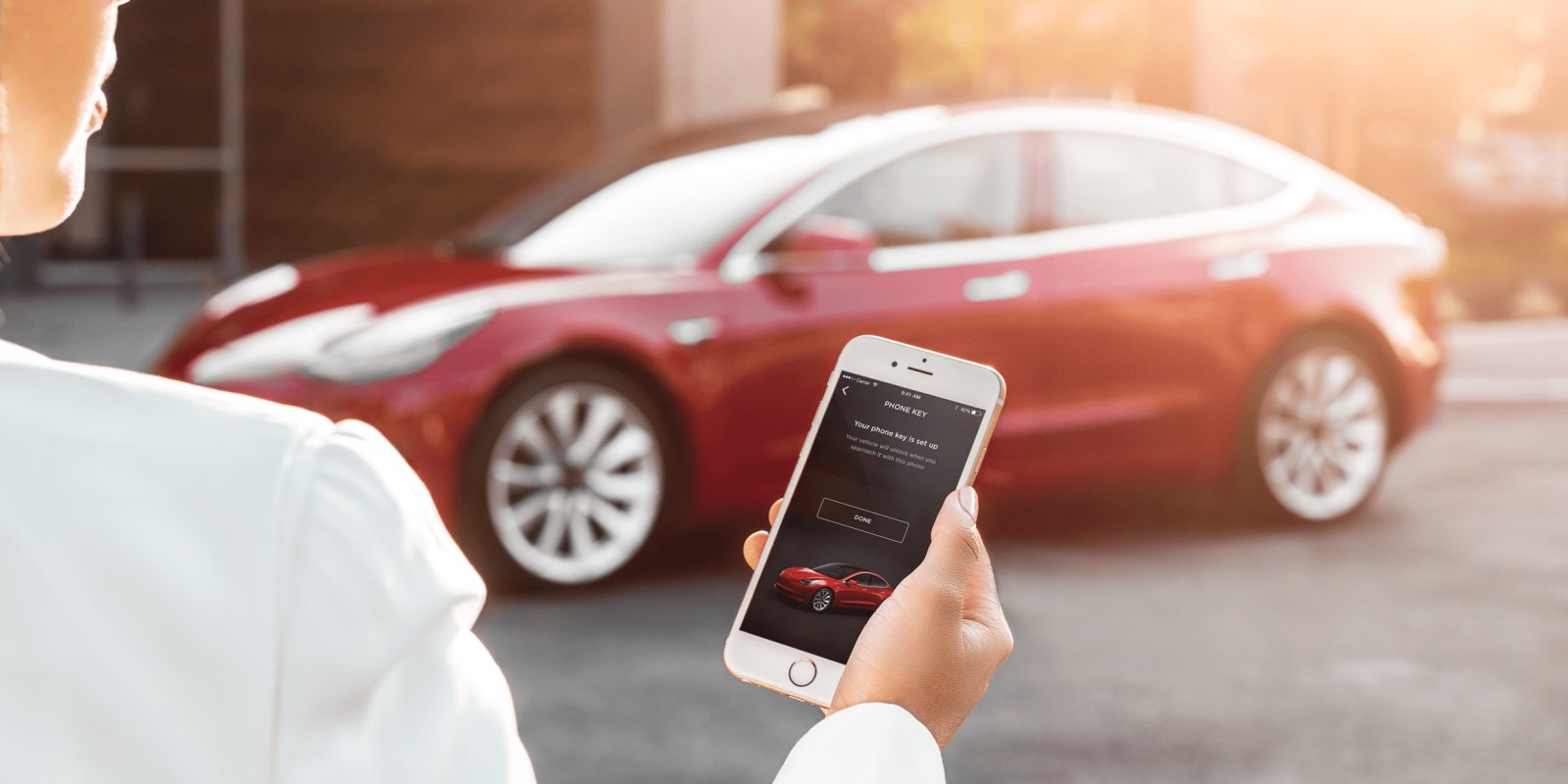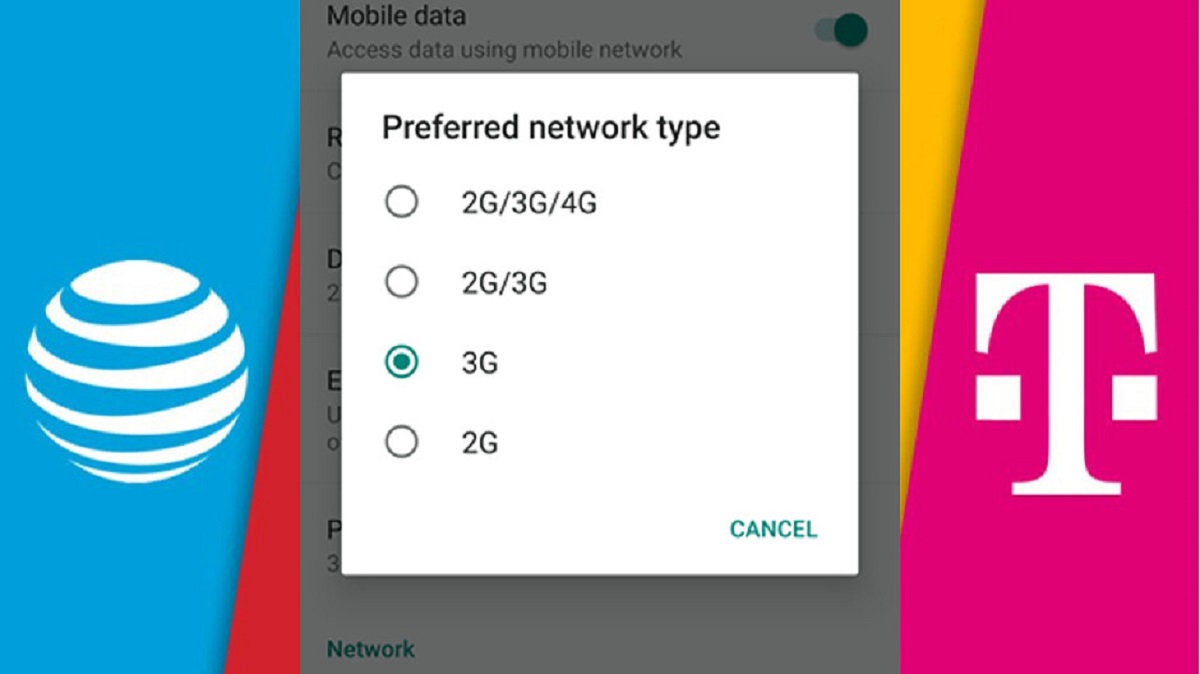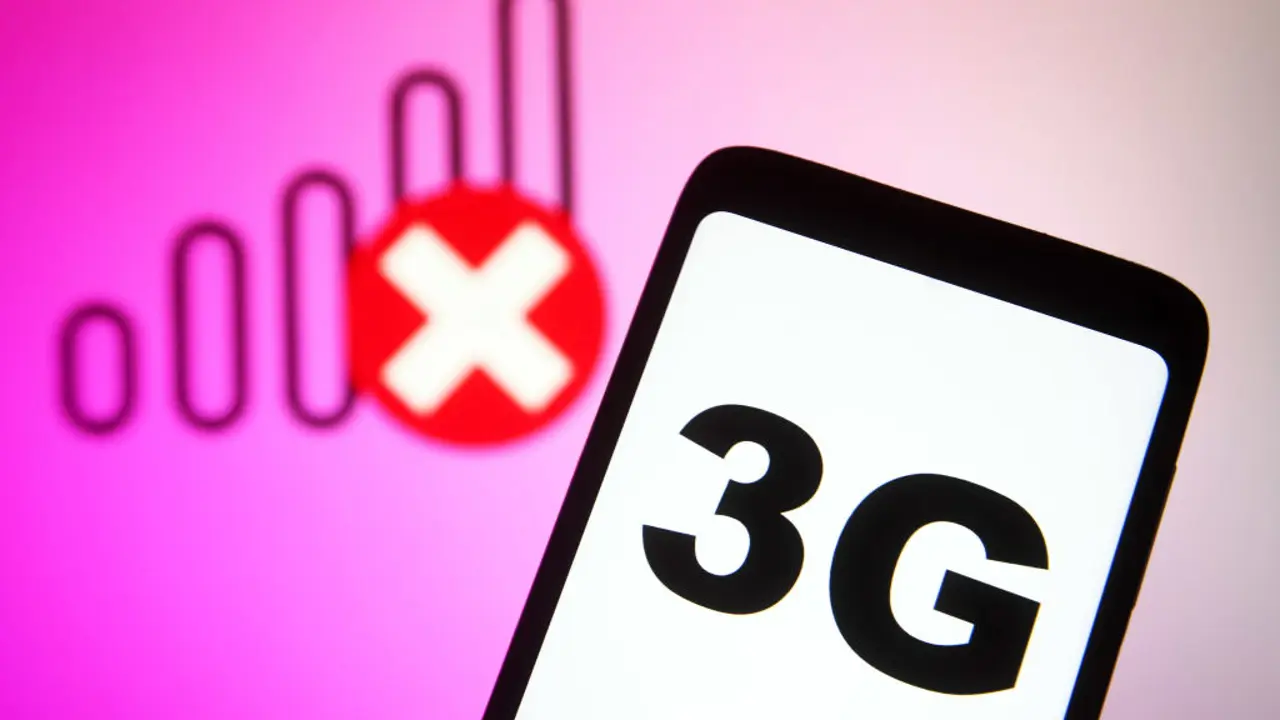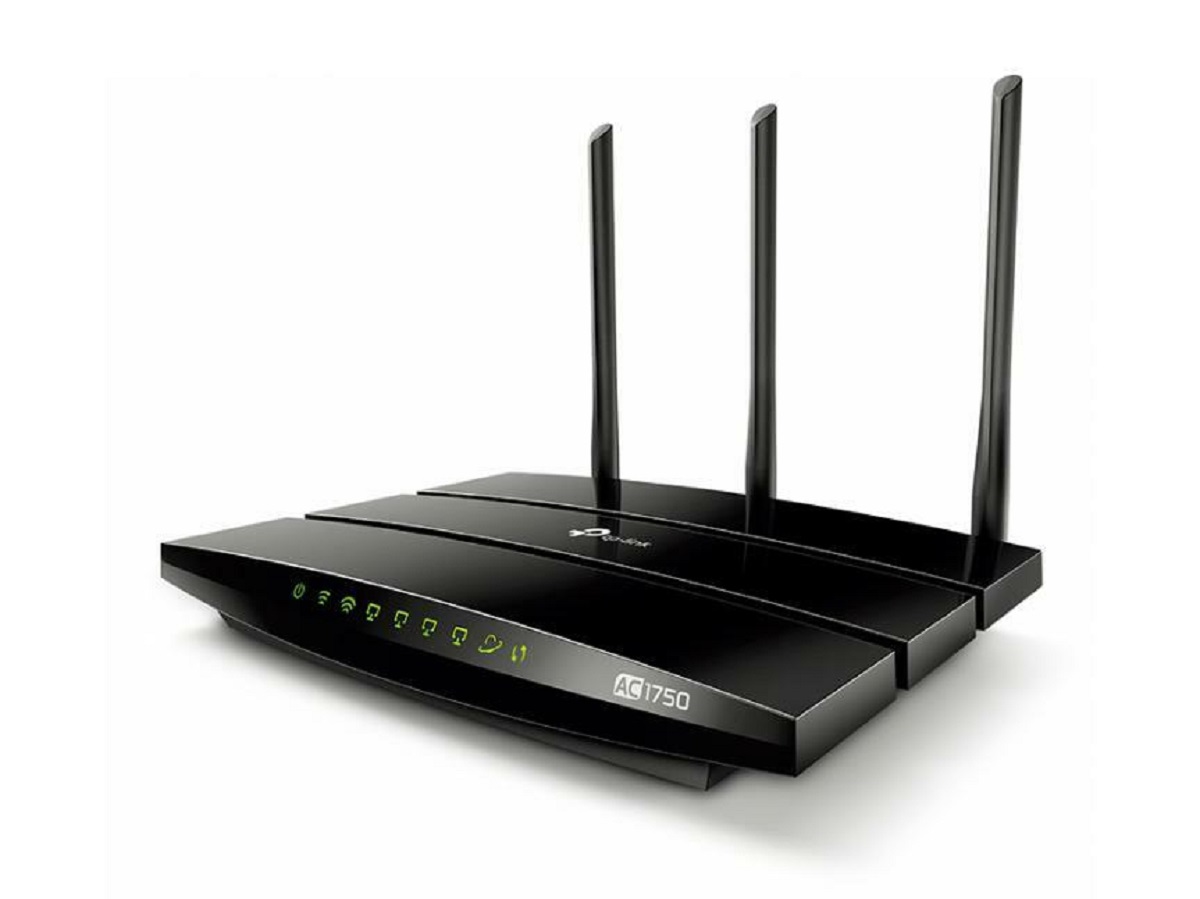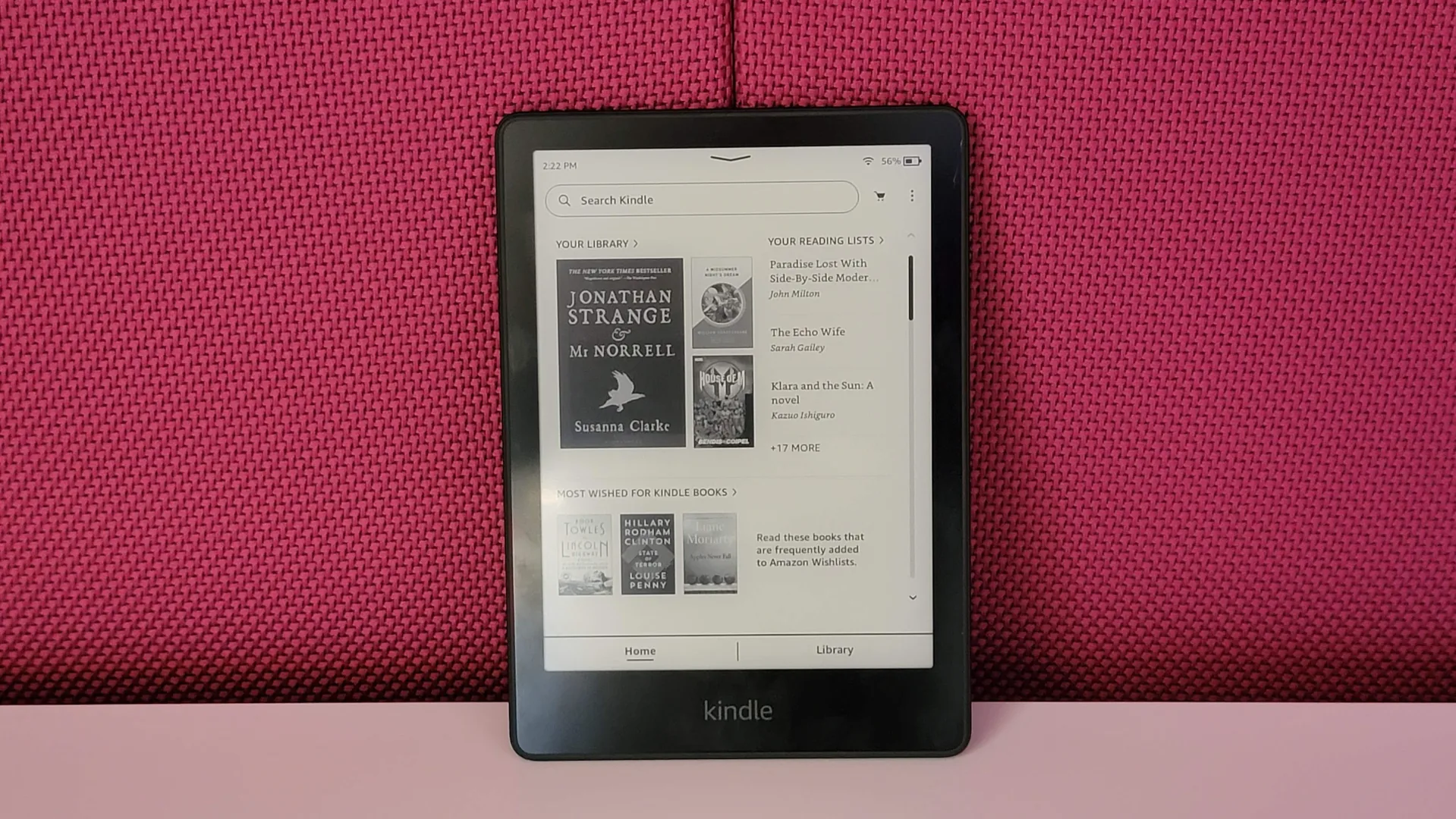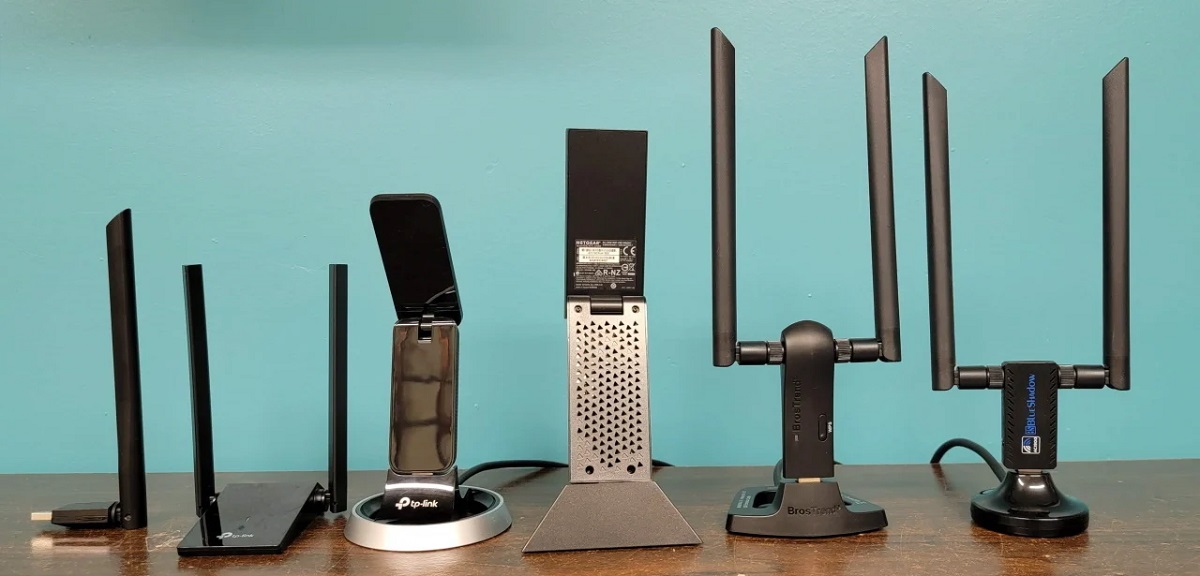Introduction
As technology continues to advance at a rapid pace, we often find ourselves leaving behind outdated systems and embracing the new. This is the case with the imminent shutdown of the 3G network. For many of us, this transition may seem inconsequential, but it has the potential to impact various aspects of our daily lives, including the cars we drive.
In this article, we will delve into the details of the 3G shutdown and explore the potential consequences for car owners. From electric and hybrid cars to older vehicles, we will examine the different categories of cars that may be affected. Additionally, we will discuss the impact on connected car features, navigation systems, and emergency services.
Understanding how this network shutdown may impact your car is crucial for staying informed and prepared. So, whether you’re a car enthusiast, a daily commuter, or someone considering purchasing a new vehicle, this article will provide you with the knowledge you need to navigate the changing landscape of car connectivity.
The 3G Shutdown: What you need to know
In the ever-evolving world of technology, networks and telecommunications systems are constantly upgraded to keep up with the demands of an interconnected world. One of the latest developments is the planned shutdown of the 3G network. But what does that mean for you and your car?
Firstly, it’s important to understand what the 3G network is and why it’s being phased out. 3G, or third generation, has been a crucial technology for mobile communications over the past two decades. It provided faster data speeds and enabled features like mobile internet browsing, video streaming, and app functionality on our smartphones and other devices. However, as newer and faster networks, such as 4G and 5G, emerge, the need for maintaining the outdated 3G network diminishes.
The 3G network shutdown will have both positive and negative implications. On the positive side, the decommissioning of the 3G infrastructure will free up valuable bandwidth and resources, enabling network providers to offer greater capacity and faster speeds on newer networks. This means improved connectivity and better user experiences for those using 4G or 5G-enabled devices.
However, the downside to this transition is that devices and systems that rely solely on 3G connectivity will no longer function. This includes certain models of cars that have integrated 3G modems for features such as remote vehicle monitoring, software updates, and emergency services connectivity.
Car manufacturers have already been shifting towards 4G and 5G capabilities in newer models, but there are still many cars on the road that rely on 3G connectivity for certain features. If your car falls into this category, it’s essential to understand the potential impacts and consider your options moving forward.
Fortunately, most network providers have announced a planned timeline for the shutdown, allowing car owners to prepare for the change. It’s crucial to stay informed about the specifics and reach out to your car manufacturer or dealership for guidance on how the 3G shutdown may affect your vehicle.
In the following sections, we will explore the vehicles that are most likely to be affected by the 3G shutdown, including electric and hybrid cars, older vehicles, and those with connected car features. We will also discuss the impact on navigation systems and emergency services.
Understanding the 3G Network
Before we delve into the impacts of the 3G shutdown on cars, it’s important to have a basic understanding of the 3G network itself.
The 3G network, or third generation, revolutionized mobile communications when it was introduced in the early 2000s. It provided faster data speeds and expanded the capabilities of mobile devices beyond simple phone calls and text messages.
One of the key features of the 3G network was its ability to transmit data, enabling seamless internet browsing, video streaming, and downloading of apps on our smartphones, tablets, and other portable devices. For cars, 3G connectivity opened up a new realm of possibilities with various connected car features.
To achieve this connectivity, 3G networks relied on a combination of hardware and software components. The hardware component consisted of cellular towers, antennas, and base stations that transmitted and received data signals. On the software side, 3G networks utilized protocols and algorithms to manage data transmission efficiently.
3G networks operated on specific frequency bands, typically in the range of 850 MHz to 2100 MHz. These frequency bands allowed for a balance between coverage area and data transfer speeds.
However, as newer and faster networks like 4G and 5G emerged, the limitations of the 3G network became more apparent. 3G’s data transfer speeds, although groundbreaking at the time, began to fall behind the growing demand for faster connectivity and the increasing data requirements of modern devices.
As a result, network providers started phasing out the 3G network to make way for more advanced technologies. This transition allows for improved network performance, higher data transfer speeds, and enhanced user experiences.
It’s important to note that the 3G shutdown may vary in timing and implementation across different countries and network providers. Therefore, it is crucial to stay updated with the announcements from your respective network providers to understand the specific timeline for the discontinuation of 3G services.
With this understanding of the 3G network, we can now explore the potential impacts of the 3G shutdown on cars and the specific categories of vehicles that may be affected.
The Impacts of the 3G Shutdown
The impending shutdown of the 3G network will have significant impacts on various aspects of our daily lives, including our cars. Let’s explore some of the key areas that will be affected by this transition.
One of the primary impacts of the 3G shutdown will be on the connectivity of certain car models. Cars equipped with 3G modems for features like remote vehicle monitoring, software updates, and emergency services connectivity may experience disruptions or complete loss of these functionalities. This can be particularly concerning for owners who rely on these features for peace of mind and convenience.
Electric and hybrid cars may also be affected by the 3G shutdown. These vehicles often require connectivity for essential functions like remote charging management, battery monitoring, and software updates. Owners of electric and hybrid cars should check with their car manufacturers or dealerships to ensure that their vehicles will continue to operate seamlessly after the shutdown.
Another area that will be impacted is older vehicles. Many older car models are not equipped with the latest connectivity technologies and may rely solely on 3G networks for certain features. The 3G shutdown could render these functionalities useless, leaving owners with limited options for connectivity and even potential difficulties in accessing crucial services.
Connected car features will also be affected by the 3G network shutdown. Features such as in-car Wi-Fi hotspots, voice-activated controls, and remote access applications may rely on 3G connectivity. Car manufacturers are gradually transitioning to newer networks like 4G and 5G, but older models may still be dependent on 3G for these features.
Navigation systems in cars may also experience disruptions due to the 3G shutdown. Real-time traffic updates, map data, and connected services integrated into the navigation systems may rely on 3G networks for seamless functionality. Car owners should evaluate the impact on their navigation systems and consider alternative options for up-to-date mapping and connected services.
Emergency services in cars, such as automatic crash notification and roadside assistance, may also be affected by the 3G shutdown. These services often rely on 3G connectivity to communicate with emergency response centers and provide timely assistance in case of emergencies. Car owners should check with their car manufacturers or service providers to ensure that these critical services will not be disrupted.
It’s essential for car owners to stay informed and take proactive measures to mitigate the impacts of the 3G shutdown. Keeping in touch with your car manufacturer, dealership, or service provider will help you navigate the transition smoothly and explore possible solutions to ensure continued connectivity and functionality of your vehicle.
Now that we understand the potential impacts of the 3G shutdown, let’s delve into the specific categories of cars that may be affected, starting with electric and hybrid vehicles.
Cars affected by the 3G Shutdown
With the upcoming shutdown of the 3G network, various categories of cars may face potential disruptions or loss of connectivity. Let’s take a closer look at the types of vehicles that are most likely to be affected.
Electric and hybrid cars are at the forefront of technological advancements, often incorporating cutting-edge features and connectivity. Many of these vehicles rely on 3G networks for functions such as remote software updates, battery monitoring, and even managing charging sessions. The 3G shutdown may impact the seamless operation of these functions, potentially causing inconveniences for owners who rely on them for optimal performance and efficiency.
Another category of vehicles that may be affected by the 3G shutdown is older models that do not have built-in connectivity or advanced infotainment systems. These cars often lack the compatibility with newer networks like 4G and 5G and may solely rely on 3G connectivity for certain features. The discontinuation of 3G services could render these functions useless, leaving owners with limited options for connectivity and potential challenges in accessing crucial services.
However, it’s important to note that car manufacturers have been gradually transitioning to more advanced networks in newer models. As a result, many recent car models are already equipped with 4G or 5G connectivity, ensuring that they will not be affected by the 3G shutdown.
Further, connected car features are becoming increasingly prevalent in modern vehicles. These features often rely on cellular connectivity, including 3G, to enable services such as remote control of vehicle functions, vehicle tracking, and integration with smart devices. Car owners should check with their manufacturers to determine if their vehicles will continue to function seamlessly after the 3G shutdown or if any updates or modifications will be required.
In addition to connected car features, navigation systems are another aspect that may be impacted. Real-time traffic updates, connected services, and map data often rely on cellular connectivity to provide accurate and up-to-date information. Older car models may rely on 3G networks for these services, and the discontinuation of 3G could lead to limited or unreliable functionality. Car owners should explore alternative options for navigation systems or consider upgrading to newer models that offer more advanced connectivity options.
Lastly, emergency services integrated into cars, such as automatic crash notification and roadside assistance, may rely on 3G networks for seamless communication in emergencies. The 3G shutdown could potentially disrupt these critical services, emphasizing the need for car owners to ensure that their vehicles are equipped with compatible networks or seek alternatives to guarantee continuous access to emergency services.
Understanding the potential impacts of the 3G shutdown on different categories of cars allows owners to take proactive measures to address any concerns or prepare for necessary updates or modifications. In the next sections, we will delve into specific features and functionalities of cars that may be affected, starting with electric and hybrid vehicles.
Electric and Hybrid Cars
Electric and hybrid cars have gained significant popularity in recent years, offering environmentally friendly alternatives to traditional gasoline-powered vehicles. These innovative vehicles often incorporate advanced technologies, including connectivity features that may be impacted by the 3G shutdown.
One of the key areas where electric and hybrid cars may be affected is remote vehicle monitoring. Many of these vehicles utilize 3G connectivity to provide real-time data on battery levels, charging status, and energy consumption. With the shutdown of the 3G network, owners may face challenges in accessing this information and monitoring their vehicle’s performance remotely.
In addition, the 3G shutdown could impact the ability to remotely control certain functions of electric and hybrid cars. These functions may include pre-conditioning the vehicle’s temperature, locking or unlocking doors, or initiating charging sessions. Without reliable connectivity, the seamless control and management of these features may be compromised.
Battery monitoring is another crucial aspect that may be affected by the 3G shutdown. Electric and hybrid cars rely on accurate data about their battery health, including metrics such as charge levels, degradation rates, and overall performance. Interruptions in 3G connectivity can hinder the transmission of this data, potentially leading to reduced accuracy in battery monitoring systems.
Software updates are an essential part of maintaining optimal performance in electric and hybrid cars. These updates can include improvements to battery management systems, charging algorithms, and other critical components. However, with the 3G shutdown, the delivery of these updates to vehicles that rely solely on 3G connectivity may be disrupted, potentially limiting the ability to benefit from the latest advancements and optimizations.
It’s important for owners of electric and hybrid cars to stay informed about the specific plans and announcements from their car manufacturers. Some manufacturers may offer solutions or updates to ensure continued connectivity and functionality even after the 3G shutdown. This may involve transitioning to newer networks or integrating alternative connectivity options into their vehicles.
Furthermore, considering the increasing demand for electric and hybrid vehicles, many car manufacturers have already started equipping newer models with more advanced connectivity technologies, such as 4G or 5G. These networks offer faster speeds, improved reliability, and seamless integration with other devices and services. Owners of older electric and hybrid models, however, may need to evaluate their options for maintaining connectivity and consider upgrading to newer models if necessary.
As the automotive industry continues to evolve, the ongoing transition from 3G to more advanced networks is inevitable. Electric and hybrid car owners should actively engage with their car manufacturers or dealerships to understand how the 3G shutdown will impact their specific models and what steps they can take to ensure continued connectivity and access to essential features.
Next, we will explore the potential impacts of the 3G shutdown on older vehicles, including those without built-in connectivity technologies.
Older Vehicles
While newer car models are increasingly equipped with advanced connectivity features, older vehicles often lack these built-in technologies. Many owners of older vehicles may rely on standalone devices or external systems to access certain connected car functionalities. As the 3G network shutdown approaches, these vehicles face unique challenges and potential disruptions.
One of the primary concerns for owners of older vehicles is the reliance on 3G networks for certain connected car features. These features may include GPS navigation, hands-free calling, or music streaming through integrated infotainment systems. With the discontinuation of 3G services, these functionalities may become limited or cease to work entirely on older vehicles.
Additionally, older vehicles may lack compatibility with newer networks like 4G and 5G, making them reliant solely on 3G connectivity. The 3G shutdown could result in a complete loss of connectivity for these vehicles, leaving owners without access to critical services or conveniences they may have become accustomed to.
Owners of older vehicles should explore alternative connectivity solutions to mitigate the impacts of the 3G shutdown. It may be possible to upgrade aftermarket components or add-on devices that support newer network technologies. However, the feasibility of these solutions may vary depending on the specific make and model of the vehicle.
For some older vehicles, it may not be cost-effective or practical to upgrade or retrofit connectivity systems. In such cases, owners should consider alternative options for essential services that may be affected. For example, standalone GPS navigation devices or smartphone integration via Bluetooth can provide an alternative to the built-in infotainment systems that rely on 3G connectivity.
It’s important to note that the impacts of the 3G shutdown on older vehicles will depend on various factors, including the specific features and systems in individual vehicles, as well as the network providers and their planned timeline for the shutdown. Staying informed and reaching out to car manufacturers or dealerships can help in understanding the options available for maintaining connectivity or finding suitable alternatives.
Ultimately, the 3G network shutdown presents a challenge for owners of older vehicles who rely on 3G connectivity for certain features. However, it also serves as an opportunity to explore newer technologies and connectivity solutions that can enhance the overall driving experience. By staying proactive and seeking guidance from relevant sources, owners of older vehicles can navigate the transitional period while ensuring continued access to essential services.
Next, we will discuss the potential impacts of the 3G shutdown on cars with connected car features beyond navigation and older technology limitations.
Connected Car Features
As technology advances, connected car features have become increasingly prevalent in modern vehicles. These features utilize cellular connectivity, including 3G networks, to enable a range of functions and services. However, with the impending 3G network shutdown, the availability and functionality of these connected car features may be impacted.
Connected car features encompass a wide range of capabilities, including in-car Wi-Fi hotspots, voice-activated controls, remote access applications, and integration with smart devices. These features provide convenience, entertainment, and enhanced safety for car owners, making the driving experience more enjoyable and efficient.
Many of these features rely on a consistent and reliable cellular connection, often utilizing 3G networks for seamless integration with the car’s systems and external services. With the 3G shutdown, the impact on connected car features may vary depending on the specific model and year of the vehicle.
In newer car models, manufacturers have already transitioned to more advanced networks like 4G and 5G, ensuring continued connectivity and functionality for these features. However, for older vehicles, especially those without built-in connectivity technologies, the 3G shutdown may result in a loss of access to connected car services.
Owners of older vehicles with integrated 3G connectivity may face challenges with features such as remote control of vehicle functions, advanced telematics, and over-the-air software updates. The functionality of these features could be limited or completely unavailable once the 3G network is shut down.
Nevertheless, car manufacturers and network providers are aware of the 3G shutdown and its potential impacts, and many have already implemented solutions and alternatives to ensure a seamless transition. Some manufacturers may offer upgrades or retrofits to enable compatibility with newer networks, allowing older vehicles to remain connected and benefit from the latest connected car features.
Additionally, external devices or aftermarket solutions can be considered to supplement connectivity for older vehicles without built-in features. These devices can provide access to certain connected car functionalities, such as real-time vehicle data tracking, remote monitoring, and smart device integration.
Engaging with car manufacturers and staying up to date with announcements and support channels will provide valuable information and guidance on how to maintain and adapt the connectivity features in your vehicle. It may involve transitioning to newer models, upgrading existing systems, or exploring alternative solutions tailored to your specific vehicle and connectivity needs.
As the automotive industry continues to evolve, connectivity and technology are integral parts of modern vehicles. While the 3G shutdown may present challenges, it also opens the door to advancements in network connectivity, with higher speeds and more reliable services available through 4G and 5G networks.
In the next section, we will explore the impact of the 3G network shutdown on navigation systems and the potential alternatives available to car owners.
Navigation Systems
Navigation systems have become an integral part of modern cars, providing drivers with real-time directions, traffic updates, and a seamless driving experience. However, with the impending 3G network shutdown, the reliance of these systems on 3G connectivity raises concerns about their continued functionality and accuracy.
Navigation systems in cars often rely on a cellular connection, including 3G networks, to access up-to-date map data, provide real-time traffic updates, and enable connected services. The 3G shutdown can potentially impact the performance and reliability of these systems, particularly in older vehicles that rely solely on 3G connectivity.
One of the main considerations is the availability of updated map data. Navigation systems frequently rely on online services to provide accurate and current information about routes, points of interest, and traffic congestion. Disruptions in the 3G network can limit the ability to access these online services, potentially resulting in outdated or incomplete map data.
Real-time traffic updates are another crucial feature that can be affected by the 3G shutdown. Traffic data is commonly collected through online services and transmitted to navigation systems in real-time, allowing drivers to make informed decisions and avoid congestion. Without a reliable network connection, the real-time traffic updates may become limited or unavailable, compromising the effectiveness of navigation systems.
Connected services integrated into navigation systems, such as weather updates, fuel prices, and local search capabilities, may also rely on 3G connectivity. The discontinuation of 3G services can impact the availability and accuracy of these services, potentially leading to reduced functionality or limitations in accessing relevant information.
Car manufacturers have been actively addressing the 3G shutdown by incorporating connectivity capabilities compatible with newer networks, such as 4G or 5G, in newer models. However, owners of older vehicles should evaluate the potential impact on their navigation systems and explore alternative solutions.
Fortunately, there are alternative options available for navigation systems, independent of integrated features that rely on 3G connectivity. Smartphone-based navigation applications, for example, can provide GPS guidance, real-time traffic updates, and other helpful features without the need for a separate in-car system.
Additionally, standalone GPS devices are still widely available and provide reliable navigation services. These devices come with updated maps, voice-guided directions, and other features to ensure a smooth navigation experience, regardless of the availability of a cellular network.
It is essential for car owners to evaluate their options and consider the compatibility of their navigation systems with the changing network landscape. Exploring alternative solutions, such as smartphone apps or standalone GPS devices, can ensure uninterrupted navigation capabilities even after the 3G network shutdown.
Next, let’s delve into the potential impact of the 3G shutdown on emergency services integrated into cars and the importance of maintaining reliable connectivity for these critical functions.
Emergency Services
Emergency services integrated into cars play a crucial role in ensuring the safety and well-being of drivers and passengers. These services, including automatic crash notification and roadside assistance, rely on stable and reliable connectivity, often utilizing 3G networks. With the impending 3G network shutdown, the availability and effectiveness of these critical services may be impacted.
One of the key aspects of emergency services in cars is automatic crash notification. This feature uses sensors to detect collisions and automatically sends a notification to emergency response centers, providing vital information and enabling faster response times. The transmission of these notifications relies on a reliable network connection, and the discontinuation of the 3G network can potentially impact the seamless delivery of these notifications.
Moreover, roadside assistance services integrated into cars often rely on 3G connectivity to communicate with service providers and dispatch assistance in case of breakdowns or other emergencies. With the 3G network shutdown, the ability to access prompt and efficient roadside assistance services may be compromised, causing potential delays or limitations in receiving the necessary help.
Car owners should reach out to their car manufacturers or service providers to understand the specific impact of the 3G shutdown on emergency services in their vehicles. Manufacturers may implement alternative technologies or network compatibility upgrades to ensure that emergency services remain accessible and reliable.
Furthermore, it is crucial for car owners to explore alternative options to maintain reliable connectivity for emergency services in case of network disruptions. Carrying a charged mobile phone with access to emergency services numbers is essential. Additionally, drivers can consider subscribing to independent roadside assistance services that provide coverage regardless of the car’s connectivity status.
Keeping emergency preparedness in mind, car owners should maintain their vehicles properly, ensuring the functionality of safety features and regularly updating contact information for emergency services. In case of network disruptions or limitations in accessing integrated emergency services, drivers should be prepared to rely on alternative means of communication and assistance.
Understanding the potential impacts of the 3G network shutdown on emergency services and taking proactive measures to maintain reliable connectivity for critical functions can help ensure the safety and well-being of car occupants. In the next section, we will summarize the key points discussed throughout the article.
Conclusion
The upcoming shutdown of the 3G network will undoubtedly have implications for various aspects of our daily lives, including the cars we drive. It’s important to stay informed and understand the potential impacts of the 3G shutdown on different categories of vehicles and their connected features.
Electric and hybrid cars, older vehicles, and those with integrated 3G connectivity are among the categories that may be affected. Electric and hybrid cars may experience disruptions in remote vehicle monitoring, software updates, and battery monitoring. Older vehicles may face challenges with connectivity and the availability of certain connected car features. Moreover, the discontinuation of 3G services can impact navigation systems and the availability of real-time traffic updates and connected services.
Emergency services integrated into cars, such as automatic crash notification and roadside assistance, also rely on stable connectivity. Ensuring reliable access to emergency services is crucial for driver and passenger safety, and alternative options should be considered in case of network disruptions.
Car manufacturers and network providers have been working to address the 3G network shutdown, with many offering solutions, upgrades, or alternatives to maintain connectivity and functionality. Owners of affected vehicles should engage with manufacturers and explore guidance and support channels to understand their options and make informed decisions.
As the automotive industry continues to evolve, connectivity technologies are constantly improving, with 4G and 5G networks providing faster speeds and more reliable services. Exploring alternative connectivity solutions, such as smartphone apps or standalone GPS devices, can mitigate the impact of the 3G shutdown on navigation systems.
Ultimately, navigating the changing landscape of connectivity in cars requires adaptability and proactive measures from car owners. Staying informed, exploring options, and seeking guidance from relevant sources will help ensure a smooth transition and continued access to essential services.
As technology advances and connectivity becomes increasingly integral to the driving experience, it is essential to stay updated with the latest developments and embrace the opportunities presented by newer networks. By doing so, we can continue to enjoy the convenience, safety, and enhanced functionality that connected cars bring to our lives.







